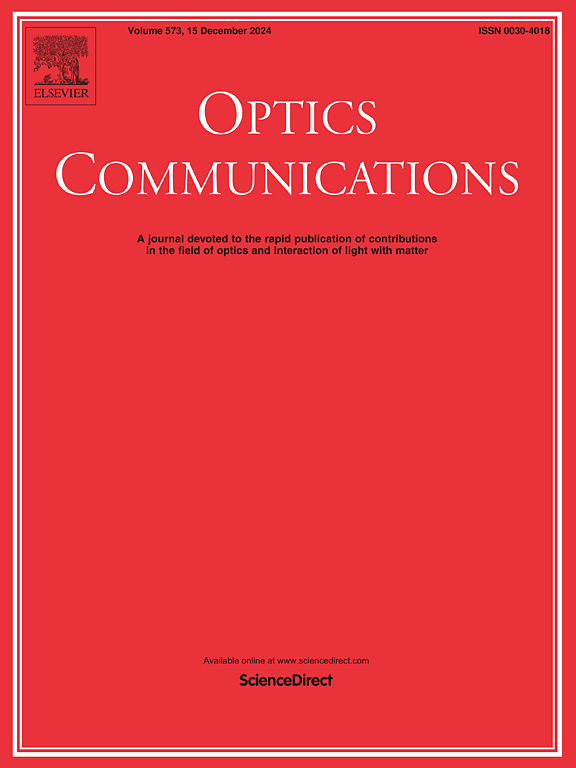Optical design of a double-sided telecentric zoom system with large field of view
IF 2.2
3区 物理与天体物理
Q2 OPTICS
引用次数: 0
Abstract
Double-sided telecentric zoom system (DTZS), characterized by low distortion and high detection accuracy, holds significant promise for applications in machine vision and medical diagnosis. However, the DTZS faces two main drawbacks: one is the lack of a suitable initial structure, and the other is the insufficient field of view (FOV) in existing optical systems. In this paper, the design of large FOV DTZS is taken as an example, and a design method suitable for large FOV zoom system is presented. In this method, the initial structure of the DTZS can be divided into a front fixed-focus system and a rear zoom system, which can be transformed into a general zoom system for design, and then the system is further optimized using ZEMAX. The optimization results show that the DTZS possesses a magnification range from −0.458 × to −0.11 × and a FOV for detection from 24 mm to 100 mm, which can continuous detection of both small and large objects while meeting the precision requirements for diverse objects. The system exhibits excellent imaging quality which controls the telecentricity of both sides within 0.8°, the distortion is trolled within 0.11 %, and the MTF of each zoom configuration is above 0.34 (at 80 lp/mm) throughout the entire FOV. Additionally, the CAM curve of DTZS is smooth without inflexion, and the tolerance values are loose. The DTZS is characterized by a compact structure, large FOV, low distortion, excellent image quality, making it a promising candidate for applications in fields such as industrial automation detection, machine vision.
求助全文
约1分钟内获得全文
求助全文
来源期刊

Optics Communications
物理-光学
CiteScore
5.10
自引率
8.30%
发文量
681
审稿时长
38 days
期刊介绍:
Optics Communications invites original and timely contributions containing new results in various fields of optics and photonics. The journal considers theoretical and experimental research in areas ranging from the fundamental properties of light to technological applications. Topics covered include classical and quantum optics, optical physics and light-matter interactions, lasers, imaging, guided-wave optics and optical information processing. Manuscripts should offer clear evidence of novelty and significance. Papers concentrating on mathematical and computational issues, with limited connection to optics, are not suitable for publication in the Journal. Similarly, small technical advances, or papers concerned only with engineering applications or issues of materials science fall outside the journal scope.
 求助内容:
求助内容: 应助结果提醒方式:
应助结果提醒方式:


